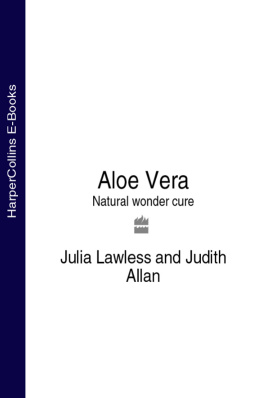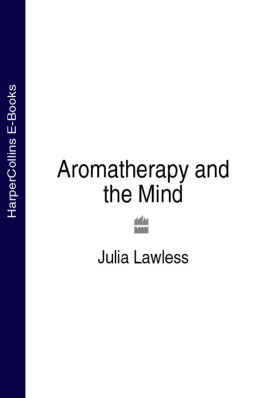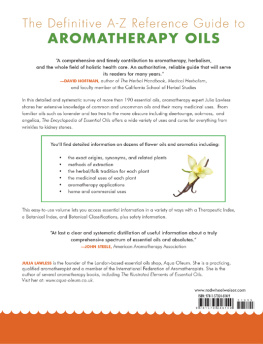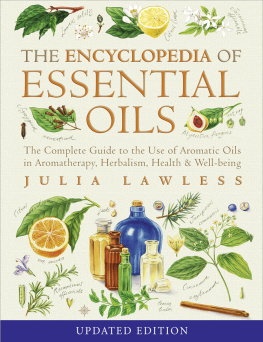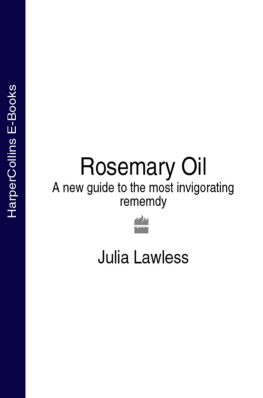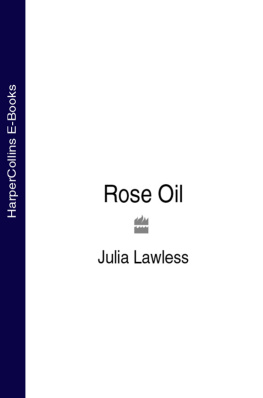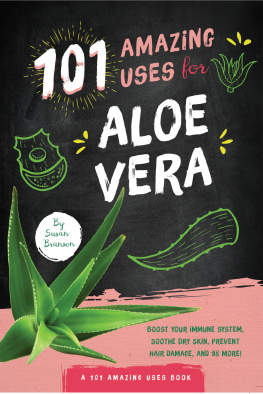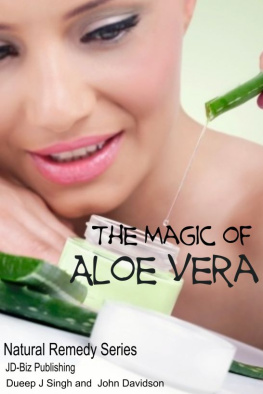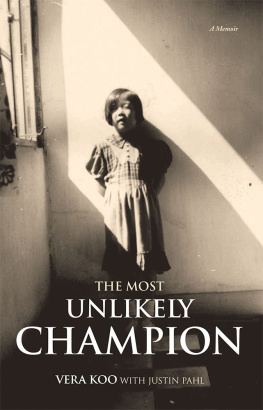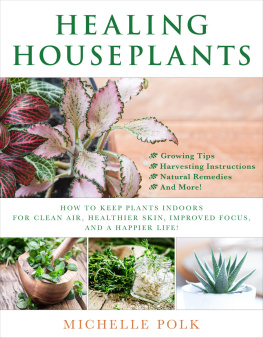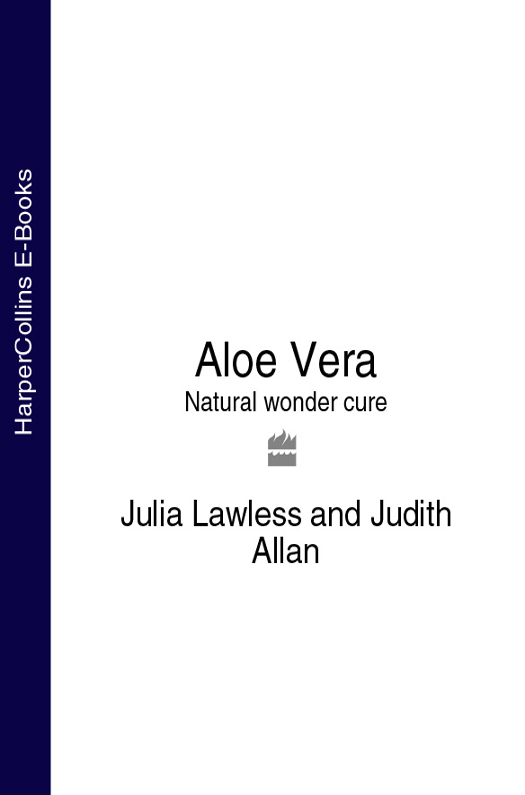To DR HAMISH ALLAN MBE
for his infinite kindness to all living beings
Contents
ALOE VERA
ALOE VERA
I have always had a great love of plants, especially aromatic herbs and those species which have medicinal qualities. Aloe vera is not only an easy and extremely decorative plant to grow at home, it is also one of the most versatile and potent natural remedies available.
Aloe veras freshly cut leaves have enormous value as a home treatment for a wide range of common complaints, and this adaptability is reflected in the ever-expanding range of Aloe vera products which can be found on the market today.
I myself have experienced the dramatic healing potential of aloe in relation to skin care. Having suffered from an allergic skin rash for several months and trying a number of different natural treatments without success, the condition cleared up in less than a week after daily application with Aloe vera gel! I have come across numerous personal accounts of a similar and even more startling nature, where Aloe vera was able to bring about a seemingly miraculous recovery when all other medicines had failed. It is no wonder that one of the folk names for this remarkable plant is Miracle Worker!
In writing this book I have been extremely fortunate to have been working with Judith Allan as co-author. Having grown up in southern Africa, one of her earliest recollections was of her grandfathers sub-tropical garden. He was a collector of cycads as well as rare and giant aloes. On his death the collection was presented to the Durban Botanic Gardens. A crane was even employed to lift and transport them to their new home!
Judith says:
My grandfathers garden was like a jungle: an everlasting source of wonder to me as a child. My mother inherited his love of plants and was a very gifted gardener. I grew up in a household where plants and medicine held sway. My father was a Scots GP, who despised the drug companies and their representatives and always talked of the importance of Nature in healing. In his day holistic medicine was still suspect. Were he alive today, he would have shown considerable interest in healing plants.
My first personal encounter with the marvellous healing properties of Aloe vera was in 1989. Bob Geldof had relaunched himself as a singer, following years of association with Live Aid. I was working for his manager at the time. One of his first London concerts was at the Town and Country Club. The day of the concert saw him huddled in a corner, suffering from a heavy cold and a croaking voice. At 2 oclock that afternoon I gave him a strong dose of Aloe vera, plus some bee propolis. He shouted his familiar expletive at the bitterness of the juice! That evening he was able to perform with only the very slightest hint of huskiness in his voice.
My second encounter with the healing properties of Aloe vera was later that year with an outstanding Englishwoman who stayed with me as my guest. She had lived for 18 years in a cave in India, meditating high in the Himalayas, and had now returned to Britain. Years of living in a cold cave and enduring snowy winters at 13,200 feet had taken their toll and she suffered seriously from arthritis, to the point where it was extremely painful for her to walk even a few hundred yards. Her English name was Diane Perry; her adopted Tibetan name on becoming a mendicant nun was Tenzin Palmo.
As she was in so much pain, I gave her Aloe vera juice regularly. After a couple of months her condition had considerably improved. I continued to send her bottles of Aloe vera at her request once she returned to Italy. Combined with a careful diet, she is now free from arthritic suffering. Where she was once hardly able to walk up the street, she now travels and lectures worldwide, leading a very active life.
A strange and synchronous event occurred while writing this book. Dr Maikov had sent me a book from Moscow in Russian on Aloe vera. I asked a Russian friend, Natasha Hull (ne Vassilieva) to translate the book orally for me. When I mentioned Professor Filatow and his pioneering work on Aloe therapy in Russia, she leapt up in amazement. You dont mean the great Filatow. My grandmother was his favourite student! I am very grateful to Natasha for her invaluable help.
It is our wish that this book will prove useful and inspirational, and that people everywhere will be able to benefit from this truly remarkable plant.
Julia Lawless and Judith Allan
Hampstead, October 1999
THE PLANT OF IMMORTALITY
The Aloe is a medicine recommended by the most respected tradition, it is used and affirmed by the experience of all doctors of all ages.
Dictionnaire Encyclopdique des Sciences Mdicales, Masson et Fils, Paris, 1865
The use of Aloe vera will be the most important single step forward in the treatment of diseases in the history of mankind.
Dr McDaniel MD, Chief of Pathology, Dallas-Fort Worth Medical Center, Texas
Aloe vera is a remarkable plant one of a handful of traditional folk remedies renowned since ancient times as a cure all. It has been called by such evocative names as Wand of Heaven, Miracle Worker and Silent Healer, while the ancient Egyptians referred to it as The Plant of Immortality. Indeed, one of the most outstanding qualities of Aloe vera is the versatile nature of its healing properties. Although it is best known today simply as a cosmetic ingredient, modern research is confirming the value of Aloe vera in the treatment of numerous disorders. These range from common complaints such as acne, eczema, indigestion and psoriasis to more serious medical conditions such as arthritis, ulcers, radiation burns, irritable bowel syndrome and even AIDS and cancer.
Aloe vera resembles a cactus with its characteristic spiky, fleshy leaves. In fact it is a perennial succulent belonging to the Aloaceae family. There are around 350 varieties of the Aloe plant, but the one with the best-known medicinal qualities is simply called Aloe vera, meaning the true aloe. There are also four or five other varieties which are commonly used in healing.
The distinctive appearance of the Aloe vera plant is depicted on Egyptian temple friezes as early as 4000 BC, while its first recorded therapeutic use has been traced to a Sumerian clay tablet dated at around 2000 BC.
Although the medical versatility of the plant was known to early civilizations, and its usage documented by such prominent physicians as Dioscorides, Pliny the Elder and Galen, it was only early in the 20th century that its healing potential began to be re-assessed in the light of newly emerging scientific evidence. During the 1930s, in the pioneering days of x-ray treatment, it was found that Aloe vera juice could bring prompt healing to burns caused by radiation. When all other remedies failed, it also brought relief to victims of Hiroshima and Nagasaki who were severely burned.
Its more general usage was made possible in the late 1940s when a method to stop the oxidation and deterioration of the active ingredients in the plant was discovered. Subsequent tests confirmed that pain and scarring caused by burns and wounds was greatly reduced, if not entirely eradicated, due to a wound hormone contained in Aloe vera. Nowadays, Aloe

